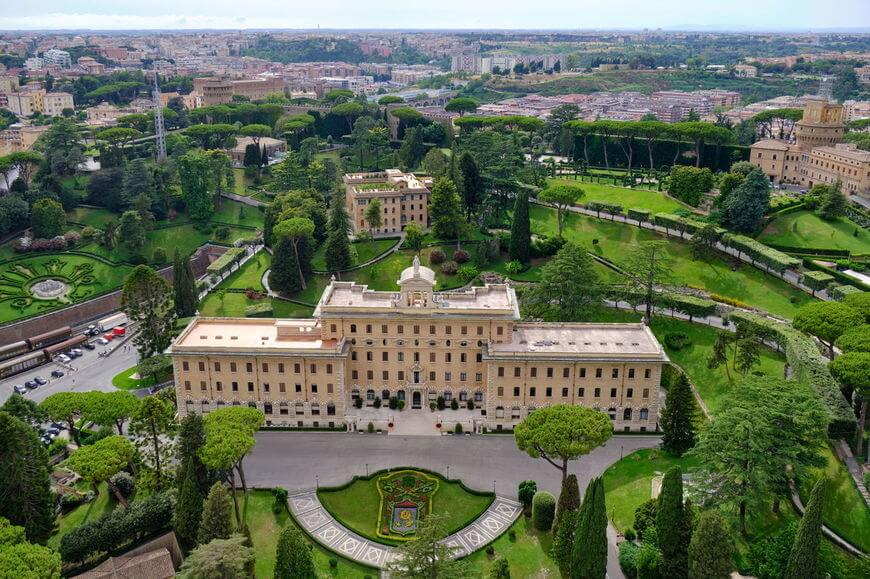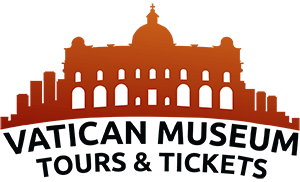Vatican Museums Ticket & Tour exemplifies the rich cultural heritage of Rome. Get ready to explore it all with our Ultimate Guide.
We will take you on a fascinating journey through one of the world’s most revered cultural institutions. Vatican Museums are located in the heart of Vatican City. This museum offers a rich collection of centuries of art, history, and culture. It’s like a treasure trove waiting for you to explore.
More than just galleries, the Vatican Museums stand as a testament to Rome’s enduring legacy. Established by Pope Julius II in the 1500s, they’ve blossomed into a haven of artistic treasures. From ancient sculptures to Renaissance paintings, each piece tells a tale of creativity, exchange, and humanity’s diverse tapestry.
Let’s uncover it together with our comprehensive Vatican Museums Ticket & Tour Guide in Italy.
What does Vatican Museum ticket include?
When you buy a ticket to the Vatican Museums, you get to explore a world of wonders! Here’s what’s included:
Skip the Line:
No need to wait! With your ticket, you can skip the long lines and head straight inside the Vatican Museums to start exploring right away.
Audio Guide:
Want to learn more about what you’re seeing? Consider getting an audio guide. It’s like having your storyteller, explaining all the cool stuff you’re seeing in a language you understand.
Lunch and Breakfast:
Some Vatican Tickets and Tours come with a Lunch or breakfast package. Here you can grab a delicious bite to eat before or after your visit. These packages are designed to make your visit even more convenient and enjoyable. Do you want to start your day with a hearty breakfast?
Or want to relax with a satisfying lunch after exploring the wonders of the Vatican Museums? There are multiple options available to enhance your experience.
Guided Tour:
If you want a deeper dive into the art and history of the Vatican Museums, think about booking a guided tour. Friendly guides will show you around, share fascinating stories, and help you discover hidden treasures you might have missed on your own.
Transportation:
Getting to the Vatican Museums is easy! You can take a bus, hop on the metro, or even walk from nearby areas in Rome. Some Vatican tour packages even include transportation. Making it super convenient to get there from wherever you are in the city.
What is the best ticket to visit Vatican?
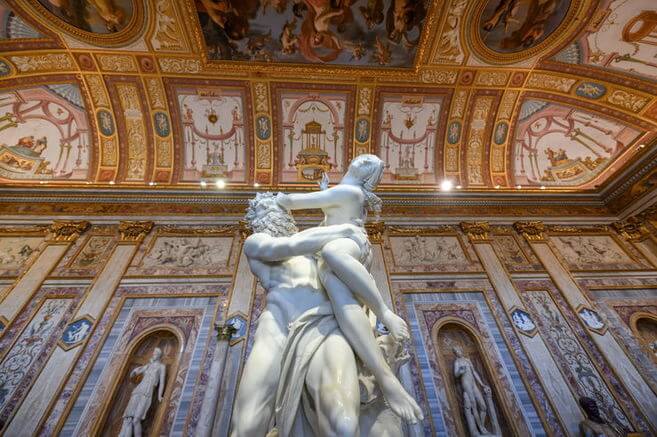
Selecting the perfect Vatican Museum ticket is easy because there are lots of choices. Whether you’re going with a group or on your own, there’s an option for everyone. Just pick the ticket that works best for you and start exploring the wonders of Vatican City!
Full Entry Ticket:
This ticket grants access to the Vatican Museums, including the Sistine Chapel and all the other exhibits. It’s the standard ticket for adult visitors.
Full Entry Ticket “Skip the Line”:
Similar to the full entry ticket, this option allows visitors to bypass the long lines and enter the Vatican Museums directly, saving time and avoiding queues.
Reduced Entry Ticket:
The discounted ticket is extended to specific groups, such as seniors, individuals with disabilities, and EU citizens, upon presentation of valid identification.
Children aged 7 to 18 years, individual priests, men, and women religious, seminarians, novices with appropriate documentation, and both active and retired employees of Offices. And also Dicasteries, and other Entities of the Holy See and/or Vatican City State are also eligible for the reduced rate. Additionally, one companion may also benefit from the discount.
Kindly note that once you’ve purchased the reduced ticket, refunds are not available. If you purchase a new ticket after buying a reduced one, it must be at the full price, as the previously discounted ticket will become invalid.
Reduced Ticket for Students:
Students with a valid student ID can purchase this discounted ticket to access the Vatican Museums. It offers a reduced rate compared to the standard adult ticket.
Free Entry to Vatican Museums:
Some individuals, including children under a specific age bracket, residents of Vatican City, and accredited journalists, may qualify for complimentary admission to the Vatican Museums. Certain conditions must be met, and valid documentation may be necessary.
Also, people exceeding 74% disability are allowed free entry, and non-self-sufficient visitors receive free entry for a companion. These free tickets must be brought in person at the Vatican Museums. Free entry is also eligible for professors from certain subjects (Archaeology, Art History, Architecture, and Ethnology fields), and schools in Rome-based academies.
Also, there are certain times when you can acquire a free pass to explore certain parts of the Vatican. On the last Sunday of each month, the Vatican Museums may offer free entry to all visitors. However, please note that these days tend to be quite crowded.
Roma Pass:
The Roma Pass is a special city sightseeing pass for Rome that offers free or discounted entry to many attractions, including the Vatican Museums. It typically includes public transportation as well.
Rome & Vatican Pass:
This pass provides access to numerous attractions in Rome and the Vatican City, including the Vatican Museums, St. Peter’s Basilica, and the Colosseum. It may also include additional perks such as skip-the-line access and guided tours.
Vatican Pass:
The Vatican Pass is specifically tailored for visitors to Vatican City and includes entry to the Vatican Museums, the Sistine Chapel, and St. Peter’s Basilica. It often offers skip-the-line access and may include audio guides or guided tours.
Sistine Chapel Ticket:
This ticket grants access specifically to the Sistine Chapel within the Vatican Museums. It’s ideal for visitors who want to focus solely on experiencing Michelangelo’s masterpiece without exploring the entire museum complex.
Castel Sant’Angelo Ticket:
This ticket grants entry to Castel Sant’Angelo, a historic fortress located near Vatican City. It offers visitors the opportunity to explore the castle’s fascinating history and enjoy panoramic views of Rome.
Let’s move inside the Vatican Museum and explore what you can expect with the Vatican Museum Tour.
Unveiling the Marvels: All the Highlights from the Vatican Museums
The Vatican Museums are a testament to the wealth of artistic and cultural treasures. All accumulated by the Catholic Church over centuries. The museums boast an extensive collection of artworks, artifacts, and historical relics. They span various civilizations and epochs. Among the highlights:
Sistine Chapel:
The crowning jewel of the Vatican Museums is the Sistine Chapel. It is renowned for Michelangelo’s awe-inspiring ceiling frescoes. Which depict scenes from Genesis, including the iconic “Creation of Adam.” The chapel also houses Michelangelo’s monumental “The Last Judgment” on the altar wall.
Raphael Rooms:
Painted by Raphael and his workshop, the Raphael Rooms are a series of four interconnected chambers within the Vatican Palace. The most famous of these rooms is the Stanza della Segnatura. It features Raphael’s masterpiece “The School of Athens,” a fresco depicting a gathering of ancient philosophers.
Gallery of Maps:
Commissioned by Pope Gregory XIII in the 16th century. The Gallery of Maps is adorned with topographical maps of Italy. It showcases the regions and cities of the Italian peninsula in stunning detail. The ceiling is adorned with frescoes depicting significant events in Italian history.
Pinecone Courtyard:
One of the many beautiful courtyards within the Vatican Museums is the Pinecone Courtyard. It features a massive bronze pinecone sculpture, believed to have adorned a Roman fountain in ancient times. The courtyard serves as a tranquil oasis amidst the museum’s bustling galleries.
Gregorian Egyptian Museum:
This collection houses a diverse array of ancient Egyptian artifacts. Including mummies, sarcophagi, statues, and hieroglyphic inscriptions. Highlights include the mummy of Ramses III and the statue of Isis nursing Horus.
Gregorian Etruscan Museum:
Dedicated to the civilization of ancient Etruria, this museum showcases artifacts. Such as pottery, jewelry, funerary urns, and sculptures. All of that offers insights into the religious beliefs, customs, and daily life of the Etruscan people.
Borgia Apartments:
Named after Pope Alexander VI (Rodrigo Borgia), the Borgia Apartments are a series of lavishly decorated rooms. It is adorned with frescoes and decorations from the late 15th century. Created by artists such as Pinturicchio and his workshop, these rooms feature intricate designs.
It depicts scenes from the lives of saints, allegorical figures, and classical motifs. The Borgia Apartments offer visitors a glimpse into the opulent lifestyle of Renaissance popes. As well as the artistic splendor of the Vatican’s papal residences.
Vatican Museum Must Sees Galleries – things not to miss
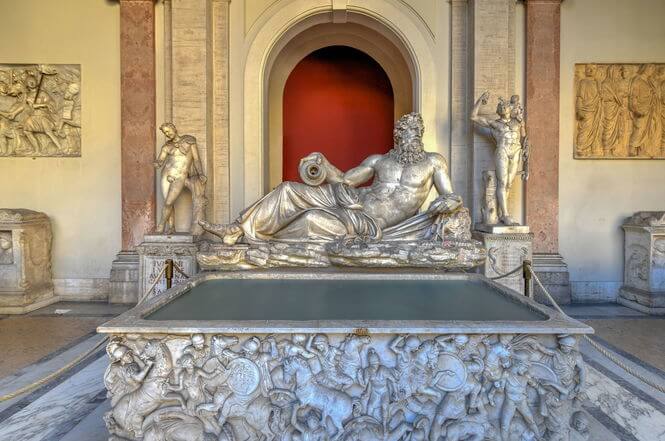
While every corner of the Vatican Museums holds artistic treasures. Several exhibits and galleries stand out for their significance and beauty:
1. The Belvedere Courtyard:
Home to classical sculptures such as the Apollo Belvedere, the Laocoön and His Sons, and the Belvedere Torso. This courtyard showcases the mastery of ancient Greek and Roman sculptors.
2. The Gallery of Tapestries:
A marvel of Renaissance artistry. This gallery displays a series of exquisite tapestries designed by renowned artists. Such as Raphael’s students based on cartoons by Raphael himself. The tapestries depict biblical scenes and allegorical motifs with remarkable intricacy.
3. The Gallery of the Candelabra:
Adorned with marble candelabra and ancient Roman sculptures. This long corridor provides a majestic backdrop for visitors as they journey through the Vatican Museums.
4. The Chiaramonti Museum:
Named after Pope Pius VII, this museum houses a vast collection of Roman sculptures. Spanning various periods, including busts, statues, sarcophagi, and reliefs.
5. The Raphael Loggias:
Inspired by the ancient Roman architectural style. These open-air galleries feature intricately painted vaulted ceilings. They are adorned with scenes from the Old and New Testaments, as well as classical mythology.
6. The Carriage Pavilion:
A testament to the grandeur of papal processions. This pavilion showcases a collection of ornate carriages, sedans, and ceremonial vehicles. They are used by the popes throughout history.
Each of these exhibits and galleries adds depth and diversity to the cultural tapestry of the Vatican Museum. You can now enjoy a captivating journey through art, history, and civilization.
How to Plan a Perfect Vatican Museum Tour
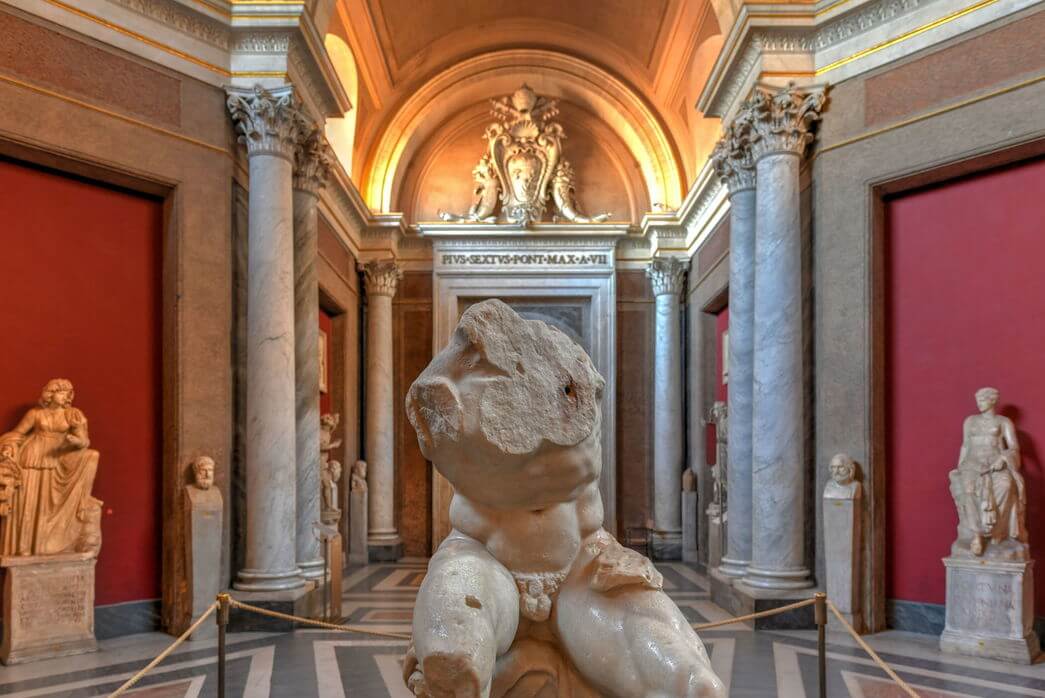
Now that you know what to see at the Vatican Museum, it’s time to prepare a perfect itinerary for you. Here we will highlight all the important aspects that you should know before a tour of the Vatican Museum.
Guided Tours vs. Self-Guided Visits
First, let’s decide what type of tour you should choose. Guided Tours or Self-guided tours.
Choosing between a guided tour and a self-guided visit to the Vatican Museums depends on so many factors. Here are the side-by-side differences for you.
| Guided Tours | Self-guided Tours |
|---|---|
| One of the biggest advantages of a guided tour is access to expert knowledge. With expert guidance, the overall experience will automatically be enriched. | There is no tour guide for you on a self-guided tour. You’re on your own when experiencing various historical contexts, artistic insights, and fascinating anecdotes. |
| Guided tours often follow a predetermined route optimized to cover key highlights efficiently. This can be particularly beneficial if you have limited time. Or want to ensure you don’t miss any must-see exhibits. | Self-guided visits offer the flexibility to explore the Vatican Museums at your own pace. it allows you to linger at your favorite exhibits, take breaks when needed, and customize your itinerary according to your interests. |
| Guided tours offer skip-the-line access, allowing you to bypass the long queues and save valuable time. Especially during peak tourist seasons when the Vatican Museums can be crowded. You don’t have to pay extra for that. | With a self-guided tour, you either purchase general Vatican Museum Tickets or skip-the-line tickets, the choice is yours. You may have to pay an additional charge for the skip-the-line access. |
| Guided tours provide an interactive experience. Here you can ask questions, engage with the guide, and gain deeper insights into the artworks and historical significance of the Vatican Museums. | With a self-guided visit, you have the freedom to choose your route and spend more time exploring areas that capture your curiosity. You can revisit specific exhibits or galleries without feeling constrained by a group itinerary. |
| Some guided tours offer access to areas not typically open to the public. Providing a more exclusive and intimate experience of the Vatican Museums. | You can’t access the special areas without a guided tour. |
| Guided tours usually come with a higher price tag compared to self-guided visits. However, the additional cost may be justified by the enriched experience and access to expert guidance. | Self-guided visits are often more budget-friendly compared to guided tours. As you won’t incur additional fees for guide services. |
What is the best day to go to the Vatican museums?
The best time to visit the Vatican Museums largely depends on your preferences regarding crowd levels, weather, and availability. Here are some considerations to help you choose the optimal time for your visit:
1. Arriving right when the Vatican Museums open, typically at 9:00 AM. It allows you to beat the crowds and enjoy a relatively quieter experience.
2. If you’re flexible with your travel plans, consider visiting the Vatican Museums on a Tuesday morning. This is because the museums are closed on Sundays. Except for the last Sunday of each month when they are open and free. So on Tuesdays, the museums tend to be less crowded compared to other weekdays.
3. While Wednesday mornings are typically busier due to the Papal Audience held in St. Peter’s Square. Many visitors attend the audience instead of exploring the Vatican Museums. This can result in slightly shorter lines and fewer crowds within the museums.
4. Consider visiting during the off-peak seasons. Such as late fall (November) and winter (excluding Christmas and New Year’s holidays).
5. Try to avoid visiting the Vatican Museums during peak holiday periods. Such as Easter, Christmas, and other religious or national holidays.
6. Do you prefer a quieter experience? And don’t mind potentially missing out on some exhibits! Consider visiting the Vatican Museums in the late afternoon, closer to the last entry time.
What is the Dress Code and Etiquette at Vatican Museums?
Dressing appropriately and adhering to etiquette guidelines are essential. Especially when visiting the Vatican Museums, which are not only cultural institutions but also religious sites. Here are some important considerations regarding dress code and etiquette:
1. Visitors should dress modestly out of respect for the religious significance of the Vatican Museums. This means avoiding clothing that is revealing, such as tank tops, sleeveless shirts, short skirts, and shorts.
2. Both men and women should ensure that their shoulders and knees are covered. It’s advisable to wear clothing that extends below the knee and covers the shoulders.
3. Comfortable and respectful footwear is recommended. Avoid wearing flip-flops, beach sandals, or any footwear that is too casual.
4. Maintain a respectful demeanor and observe silence while inside the Vatican Museums. Especially in areas of worship such as the Sistine Chapel. Refrain from talking loudly, making noise, or engaging in disruptive behavior that may disturb others.
5. Photography is generally allowed within the Vatican Museums. Except in specific areas such as the Sistine Chapel. Respect the signage and guidelines regarding photography, and refrain from taking photos in restricted areas.
6. While it may be tempting to reach out and touch the artwork, refrain from doing so. Touching artifacts can cause damage and deterioration over time. Maintain a respectful distance from the artwork and follow any instructions provided by museum staff.
How to Avoid Crowds and Long Lines at Vatican Museum?
Avoiding crowds and long lines at the Vatican Museums requires strategic planning and consideration of various factors. Here are some tips to help you navigate the museum efficiently and minimize wait times:
1. Purchase your tickets online in advance through the official Vatican Museum Tickets. Booking ahead allows you to skip the ticket line and proceed directly to the entrance. Save your valuable time, especially during peak tourist seasons.
2. Consider booking a guided tour that includes skip-the-line access to the Vatican Museums. Guided tours not only provide insightful commentary but also allow you to bypass the long queues at the entrance, saving time and hassle.
3. Start your visit by exploring less popular areas of the Vatican Museums, such as the Pinacoteca (Art Gallery) or the Gregorian Egyptian Museum. These sections may have shorter lines compared to major highlights like the Sistine Chapel.
4. Expect to undergo security checks, including bag inspections and metal detector screenings, before entering the Vatican Museums. To expedite the process, pack light and ensure that your belongings comply with security regulations.
What are the Accessibility options for Visitors with Disabilities?
1. The Vatican Museums are equipped with ramps, elevators, and wheelchair-accessible routes to accommodate visitors with mobility impairments. Wheelchairs are available for loan upon request, although availability may be limited during peak times.
2. Visitors with disabilities and their companions may be eligible for priority access to the Vatican Museums. It’s advisable to inquire about priority access options when booking tickets or upon arrival at the museums.
3. Accessible restrooms, seating areas, and designated parking spaces are available throughout the Vatican Museums. It ensures to enhancement of the comfort and convenience of visitors with disabilities.
4. Service animals accompanying visitors with disabilities are permitted inside the Vatican Museums. However, it’s recommended to inform museum staff in advance to ensure a smooth and welcoming experience.
Does Vatican Museum Tour offer Family-Friendly Activities and Amenities?
Yes, the Vatican Museums offer family-friendly activities and amenities to cater to visitors of all ages. Here are some options available for families:
1. Choose the family-oriented guided tours designed to engage children and adults alike. These tours are led by experienced educators who use storytelling, interactive activities, and games to bring the museum’s collections to life in a fun and educational way.
2. Certain exhibits within the Vatican Museums are particularly suitable for families. Featuring artworks and artifacts with themes that appeal to children’s interests and curiosity. Museum staff can provide recommendations on family-friendly exhibits and galleries to explore.
3. Look out for interactive displays and multimedia installations throughout the Vatican Museums. These interactive elements enhance the museum experience by providing immersive and engaging opportunities for learning and discovery.
4. While food and drinks are not allowed inside the Vatican Museums. There are designated picnic areas and outdoor spaces within Vatican City where families can enjoy a snack or meal together. These areas provide a peaceful retreat amidst the museum’s bustling atmosphere.
Which Vatican City tour is best?
When considering which Vatican City tour is best for you, it’s essential to weigh several factors. Including your interests, time constraints, and preferences for guided or self-guided exploration. Here’s an overview of the options available and how you can combine Vatican Museums with other attractions:
Official Vatican Guided Tours:
- Total Places Visited: Vatican Museums, Sistine Chapel, St. Peter’s Basilica.
- Total Hours: Approximately 2-3 hours.
- Benefits: This tour offers a guided exploration of the Vatican Museums and Sistine Chapel. Providing insights into the art, history, and significance of the collections. After the guided portion, visitors can embark on a self-guided tour of St. Peter’s Basilica. Allowing flexibility to explore the basilica’s sacred art and architecture at their own pace.
Private Guided Tours:
- Total Places Visited: Vatican Museums, Sistine Chapel.
- Total Hours: Approximately 2-3 hours.
- Benefits: A private Vatican tour offers personalized attention and flexibility. Allowing visitors to customize their experience based on their interests and preferences. Explore the Vatican Museums and Sistine Chapel accompanied by a knowledgeable guide. They provide informative commentary and insights into the artworks and history.
St. Peter’s Basilica Tour with Dome Climb:
- Total Places Visited: St. Peter’s Basilica (including dome climb).
- Total Hours: Flexible
- Benefits: This tour focuses on St. Peter’s Basilica, one of the most important religious sites in the world. Visitors can explore the basilica’s magnificent interior, including Michelangelo’s Pietà and Bernini’s Baldacchino. Before embarking on a challenging but rewarding climb to the top of the dome for panoramic views of Vatican City and Rome.
Vatican Gardens Bus Tour:
- Total Places Visited: Vatican Gardens.
- Total Hours: Approximately 45 minutes
- Benefits: Guided bus tours of the Vatican Gardens offer a tranquil and scenic experience. Allowing visitors to explore the meticulously landscaped grounds, historical monuments, and religious shrines of Vatican City. Guides provide commentary on the gardens’ history, architecture, and botanical diversity.
Combination Tour of Vatican and Colosseum:
- Total Places Visited: Vatican Museums, Sistine Chapel, Colosseum, Roman Forum, Palatine Hill.
- Total Hours: Approximately 6-8 hours.
- Benefits: This comprehensive tour combines visits to the Vatican Museums and Sistine Chapel with an exploration of Rome’s iconic landmarks. Including the Colosseum, Roman Forum, and Palatine Hill. Experience the rich history and cultural heritage of both Vatican City and ancient Rome in a single day.
Frequently Asked Questions (FAQs) about Vatican Museums Tickets and Tours
Here are answers to common queries about skip-the-line tickets and tours in Italy:
Do you need a tour guide for Vatican Museum?
Whether you need a tour guide for the Vatican Museums depends on your preferences and interests. While it’s not mandatory to have a tour guide. Many visitors find that having one enhances their experience significantly.
Tour guides are often knowledgeable about the history, art, and architecture of the Vatican Museums. They can provide insights and stories that you might not learn otherwise.
The Vatican Museums are extensive and can be overwhelming to navigate on your own. A guide can help you navigate through the collections efficiently. They make sure you don’t miss any highlights.
So book your multilingual Guided Tour of Vatican Museums and Sistine Chapel at Vatican Museum Tickets.
Is a Vatican Museum guided tour worth it?
Yes, a Vatican Museum guided tour is often worth it for visitors who want a deeper understanding of the museum’s vast collections, history, and significance. Guided tours provide valuable insights from knowledgeable guides, offer skip-the-line access, and enhance the overall experience of exploring the Vatican Museums and Sistine Chapel.
How much is the Vatican Museum ticket?
The cost of a Vatican Museum ticket varies depending on factors such as age, concessions, and additional services. While ticket prices for children, students, and guided tours may differ. Standard Vatican Museums Tickets Price for adult admission is around €28. It’s advisable to check the official Vatican Museum Tickets website for up-to-date pricing information.
How long is the Vatican Museum tour?
The duration of a Vatican Museum tour depends on various factors. Including the extent of the visit, whether it’s a guided or self-guided tour, and individual preferences. On average, guided tours of the Vatican Museums and Sistine Chapel typically last around 2-3 hours. While visitors may spend longer exploring the museums independently.
How much is entry to Vatican Museums?
As mentioned earlier, the entry fee to the Vatican Museums varies depending on the type of ticket and any additional services included. Prices may vary for concessions, students, and guided tour packages. Here are basic Vatican Museums Tour pricing guideline for you.
| Guided Tour of Vatican Musuem and Sistine Chapel | Starting at €59 |
| Early Morning Vatican Tour at Vatican Museum and Sistine Chapel | Starting at €89 |
| Friday Night Vatican Tour | Starting at €76 |
| VIP Private Tour at Vatican Museums and Sistine Chapel | Starting at €150 |
| Vatican Gardens Guided Tour | Starting at €56 |
| St. Peter’s Basilica Guided Tour | Starting at €69 |
Do I need to book a Vatican tour in advance?
It is highly recommended to book a Vatican tour in advance, especially during peak tourist seasons. Booking in advance ensures availability, provides skip-the-line access, and allows you to secure preferred tour dates and times. Walk-in tickets may be available, but they often involve long wait times, particularly during busy periods.
How much is entry to the Sistine Chapel?
Entry to the Sistine Chapel is included in the admission ticket to the Vatican Museums. Visitors cannot enter the Sistine Chapel separately but must go through the Vatican Museums to access it. Therefore, the entry fee to the Vatican Museums covers admission to the Sistine Chapel as well.
Can you enter St Peter’s Basilica without a tour guide?
Certainly! St. Peter’s Basilica, located in Vatican City. It is one of the most important and iconic churches in the world. It is open to the public for free. Visitors can explore its grand architecture, magnificent artworks, and significant religious sites without the need for a tour guide.
While you can explore St. Peter’s Basilica on your own. Guided tours are available for those who want to learn more about the history, architecture, and artworks of the basilica. These tours may be led by professional guides or audio guides.
Does Vatican Museum tour include St Peter’s Basilica?
No, Vatican Museum tours typically do not include St. Peter’s Basilica. However, many tours offer the option to visit St. Peter’s Basilica after the Vatican Museums tour concludes.
Is it free to climb the dome of St Peter’s Basilica?
No, it is not free to climb the dome of St. Peter’s Basilica. There is a fee to access the dome. Which covers the cost of maintenance, security, and other operational expenses. Visitors can choose between taking the elevator partway up and then climbing the remaining stairs. Or climbing the entire way by stairs for a slightly lower fee. The fee may vary depending on whether visitors choose the elevator option or the stairs-only option.
How quickly do Vatican tickets sell out?
It largely depends on the season, special events, and the popularity of certain exhibits. During peak tourist seasons such as summer and holidays, tickets tend to sell out more quickly. Especially for guided tours and special exhibitions. It’s advisable to book Vatican tickets in advance. Especially if you have specific dates and times in mind for your visit, to ensure availability and avoid disappointment.
Can you self tour the Vatican?
Yes, you can self-tour the Vatican Museums and St. Peter’s Basilica. Both attractions are open to the public for exploration without the need for a guided tour. Visitors can purchase tickets in advance or upon arrival and explore the museums and basilica at their own pace.
While self-touring allows for flexibility and independence. It’s essential to be prepared for potentially long lines, especially during peak tourist seasons. Additionally, consider using audio guides or guidebooks to enhance your understanding of the artworks, history, and architecture found within the Vatican Museums and St. Peter’s Basilica.
Conclusion
Today, we’ve covered all the information you need about Vatican Museums Tickets and Tours. You’ve got lots of ticket options to choose from, whether you want a basic ticket or a tour with a guide who knows a lot about the art.
We want this guide to help you connect with the amazing art, history, and spiritual stories inside the Vatican Museums. Get ready to explore by yourself or with a guide. We hope you’ll feel inspired by the beauty and stories you find here. It’s like going on a special journey through human creativity!

